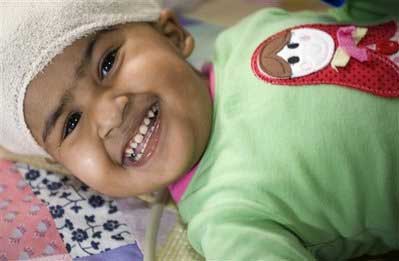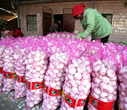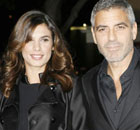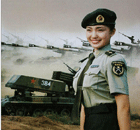Newsmaker
Twins joined at head successfully separated
(Agencies)
Updated: 2009-11-18 00:05
|
 In this August 2009, image provided by the Royal Children's Hospital Melbourne, 2-year-old Bangladeshi orphan, Trishna, is seen at the Royal Children's Hospital Melbourne in Australia. A team of Australian surgeons were working Monday, Nov. 16, 2009, on a delicate and complicated surgery to separate Trishna from her conjoined twin sister, Krishna, who are joined at the top of the head. [Agencies] |
MELBOURNE, Australia: A team of 16 surgeons and nurses successfully concluded 25 hours of delicate surgery Tuesday to separate twin Bangladeshi girls who had been joined at their heads, sharing blood vessels and brain tissue.
It is too early to know whether the two-year-old girls, Trishna and Krishna, suffered any brain damage during the marathon operation — an outcome doctors said had a 50-50 chance. The girls will remain in an induced coma for monitoring for several days after the completion of the surgery.
The medical team began the work Monday morning on separating the girls, who were brought to Australia as infants by an aid organization.
"The teams managed to separate their brains and they are both very well," Royal Children's Hospital chief Leo Donnan told reporters. "Now we have the long task of the reconstructive surgery, which will go on for many hours."
"Their bodies have to recover from this, and we've got a lot of unknown territory we're moving into," Donnan said. "All I can say is that everything is in place for the best possible outcome. The main thing is that the girls are healthy."
Earlier Tuesday, Ian McKenzie, a member of the surgical team, said the girls were improving as their bodies began to work individually.
"The twins are actually in better condition because the degree of separation has increased and this problem we've had with their circulation affecting each other has actually gotten less," he said.
The girls shared parts of their skull, brain tissue and blood flow.
Before the surgery, doctors had said there was a 50 percent chance the girls could suffer brain damage and a 25 percent chance one of the sisters would die.
They were found in an orphanage in Bangladesh in 2007 by a representative from the Children First Foundation, who brought to them to Australia.












